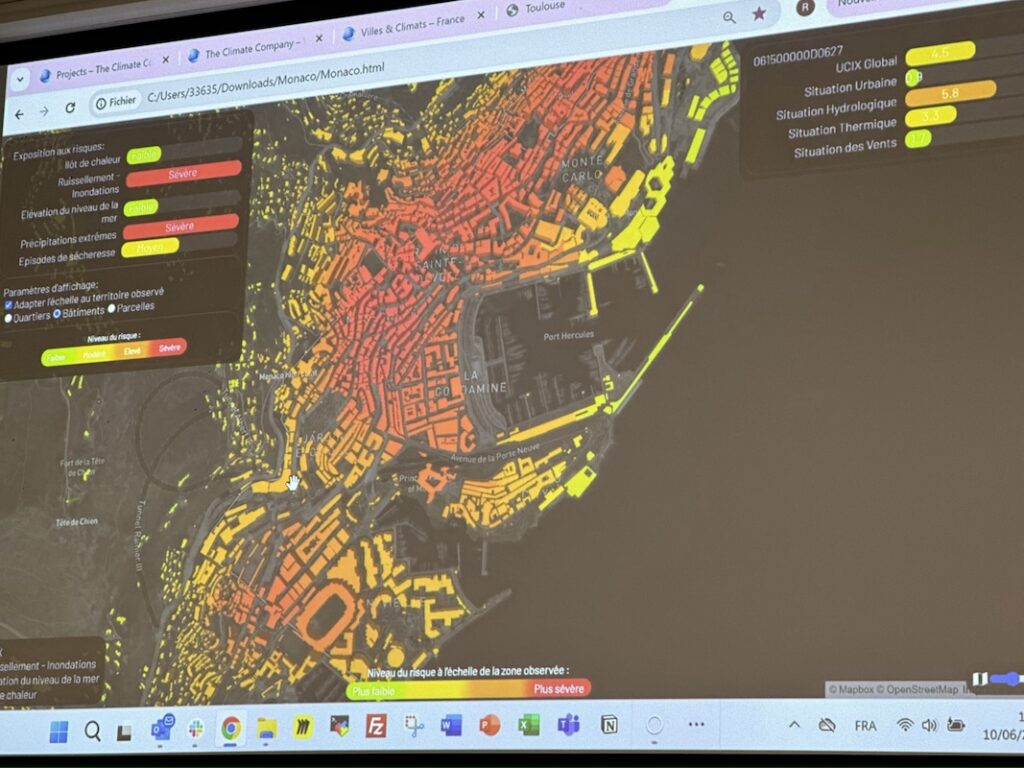Anticipating 20 years of climate risk to your projects now possible thanks to The Climate Company

In a world where the climate emergency is no longer a projection but a tangible reality, Toulouse-based start-up The Climate Company stands out in the market for understanding and using satellite data to predict and anticipate the effects of climate change.
Founded by Laurent Husson and Yves Tourre, The Climate Company benefits from the expertise of Roman Yassinski, Head of Science, and Yaniss Chehbouni, his deputy. Together, they have spent the past five years developing innovative algorithms and studying climate issues with unprecedented precision. Their mission is to turn climate anticipation into a concrete and accessible reality.
“Government is knowing how to anticipate”
The motto belongs to Charles-César d’Amat, The Climate Company’s main partner. As flooding, extreme heat waves, glacier melting and climate migrations become everyday challenges, the start-up he believes in offers tailor-made adaptation solutions.
“At a time when the climate emergency is no longer a projection but a reality, we no longer have the luxury of anticipation but rather adaptation. I think it’s difficult to find fixes. Solutions to achieve a balance? I have my doubts. However, we do have solutions for adapting, and this is what sets The Climate Company apart,” says d’Amat.
Algorithms for the future
The Climate Company has developed algorithms that are capable of providing indices, accurate to the nearest metre, to anticipate urban heat islands, rising water levels, soil drought, runoff and property damage over the next 20 years.
These indices, based on over 40 years of historical data, are just as crucial for new urban projects as they are for analysing climate risk to existing buildings.
“Between 0 and 3, there is very little climate risk over the next 20 years. Between 3 and 5, there are certain issues that begin to surface and can make the situation complex. Between 5 and 7, risk exposure is high, and that can mean significant risks to buildings. Finally, between 7 and 10, we consider that exposure to climate risk is severe, and that several situations will impact the object under consideration. In which case, we become somewhat alarmist,” explains Roman Yassinski.
Dematerialised on an online platform, these algorithms can also identify areas in cities where trees can be planted and exactly which species to plant in order to help regulate heat and mitigate climate change.

Rapidly growing take-up
Last year, The Climate Company carried out 3,000 analyses in France. In the first half of 2024 alone the figure reached 15,000 assessments. In 2025, the company expects to be processing several hundred thousand applications. On its main platform “My Climate” , the start-up works not only with the French government and towns, but also with the private sector, including estate agents, insurers, banks and major companies.
“Our priority is simply to ensure that climate data is factored into all urban development or real estate construction projects. The data makes it possible to adapt the building in real terms and to use very precise indices on a spatial scale. We are very transparent with our customers and users. If the climate impact of a project is negative, we are very firm, even to the point of advising against building in certain places,” adds Roman Yassinski.
Version 2.0, accessible to all
Aimed at the general public, The Climate Company has just launched “Villes et Climats” (Cities and Climates), a free version of the platform, enabling everyone to study the climate and its forecasts in more than 450 French towns and cities.
“It is very important that everyone has access to the data. This second version is a real revolution. This time we don’t analyse specific points but rather cadastral sections that consitute French towns and cities with over 20,000 inhabitants,” says Charles-César d’Amat.

The example of Monaco
Although the start-up has not begun working with data from the Principality yet, it can still bring its expertise to bear, thanks in particular to the indices from neighbouring municipalities. “The main risks in Monaco are hydrological risks due to the Principality’s coastal location. These are risks of marine submersion, coastal erosion or a retreat of the coastline. These risks are particularly pronounced around ports and for buildings that are in direct contact with the coastline.
There are also risks associated with urban density and mineralisation. The thermal risks of urban overheating are related to the density of infrastructures that do not allow for thermal regulation, i.e. natural ventilation, or that will encourage the absorption of heat storage,” the scientific expert concludes.










